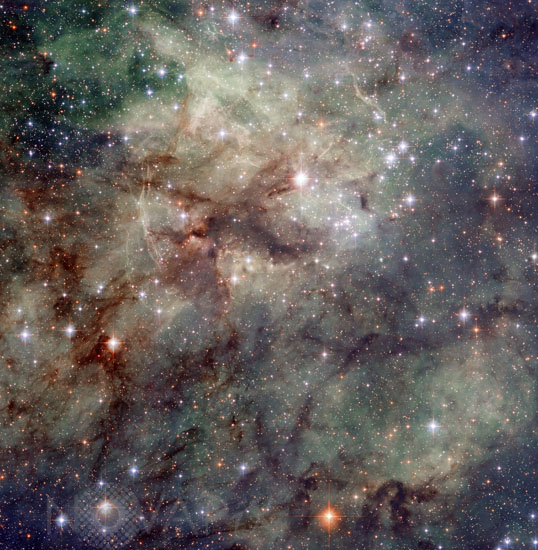Photo Agency - Astronomy - Space - Nature

Part of the Tarantula Nebula
author: Nasa/ESA/Novapix
reference: a-neb20-60001
Image Size 300 DPI: 33 * 34 cm
The part of the Tarentula nebula visible in this image from Hubble’s Advanced Camera for Surveys is criss-crossed with tendrils of dust and gas churned up by recent supernovae. These supernova remnants include NGC 2060, visible above and to the left of the centre of this image, which contains the brightest known pulsar. The tarantula’s bite goes beyond NGC 2060. Near the edge of the nebula, outside the frame, below and to the right, lie the remains of supernova SN 1987a, the closest supernova to Earth to be observed since the invention of telescopes in the 17th century. Together with dying stars, the Tarantula Nebula is packed with young stars which have recently formed from the nebula’s supply of hydrogen gas. These toddler-stars shine forth with intense ultraviolet light that ionises the gas, making it light up red. The light is so intense that although around 170 000 light-years distant, and outside the Milky Way, the Tarantula Nebula is nevertheless visible without a telescope on a dark night to Earth-bound observers. This nebula might be far away, but it is the most luminous example of its type that astronomers have observed in the local Universe.
Contact : Stéphane Aubin +33-(0)9-51-26-53-76
© Novapix - All rights reserved


